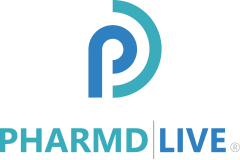- Which RPM services do I want my practice to offer?
Specialty practices should consider a system that supports RPM equipment that can collect and interpret essential patient data.
For example, cardiologists may elect to focus on blood pressure and weight while an endocrinologist may focus on blood glucose — also, general or family practices may want to consider RPM services that address their target patient base and the conditions they choose to manage.
Many practices launch an RPM program that targets a specific chronic condition — initially managing a single condition using a single piece of RPM equipment.
The practice can expand the program and provide additional services as the practice becomes more comfortable with the program and its processes.
- How difficult will it be to set up and use the RPM system?
Some RPM vendors will require practices to perform the setup work using the system and user instructions — alternatively, other vendors assist in supporting setup, making sure that questions are answered, and identifying barriers to success.
Once an RPM system is set up, ease of use then becomes a critical factor — If the system proves too challenging, providers and staff and stifle may not buy into the new procedures.
If your team is tech-savvy and/or the system vendor provides training and support, an investment in a more robust, detailed system may be worthwhile.
Some RPM systems can be detailed to augment clinical workflow, produce customized reports, and deliver desktop, laptop, and mobile notifications in the manner of your choosing.
So, as you are demoing a system, consider such elements as ease of use, custom options availability, and potential for training and support.
Another final consideration is if and how the RPM system you’re considering interfaces with existing practice technology, such as electronic medical records (EMR) software and/or revenue cycle management solution.
- What are my options for RPM equipment?
The type of remote patient monitoring equipment you can provide to your patients will vary widely by the RPM system you choose.
Always keep in mind that the success of your program will depend a great deal on the devices made available to patients.
While some vendors will require that you provide patients with their RPM equipment to their system — others will offer you the flexibility of integrating devices made by other manufacturers.
In addition, patients can receive their RPM equipment differently.
You may be offered the option of shipping devices directly to patients or having devices shipped directly to the practice, while some RPM equipment can be purchased by patients themselves.
Other questions to consider: From where will setup assistance and equipment use support come? Will your practice offer help, training, and ongoing support, or will your RPM vendor offer assistance?
Finally, consider connectivity: Do you want to offer your patients cellular devices, Bluetooth devices, or a combination of both?
- How will coding and billing for the RPM system you select be managed?
The best RPM system for your practice will ensure that coding and billing are consistently and accurately completed with staff spending as little time billing for services as possible.
Accurate and efficient billing; minimizes associated staffing costs and allows your practice to maximize profits after paying for RPM program services.
Typical vendor fees include the devices, device maintenance, software hosting, customer support, and cellular service.
- What RPM program will be the best fit for my practice?
In the end, you’ll want to compare all of your options side-by-side, speak to various vendors, and make your decision involving the brightest minds of your staff.
Keep in mind that using the team approach to selecting an RPM program will maximize staff buy-in and create excitement around the program launch.
A full-service program contains the following elements:
- A practice contracts with the RPM vendor to supply devices to patients, either shipped directly to patients or distributed at the practice.
- Another option might be to lease the devices, minimizing upfront costs for patients.
- Devices are a combination of cellular and Bluetooth connectivity, depending on the function of the device.
- Technical support and use guidance may be available for patients.
- The initial cost of devices is eliminated and staff time managing the program is minimized, but monthly costs will be a higher reimbursement percentage than self-managed programs,
A self-managed program contains the following elements:
- The practice maintains and distributes the supply of devices to patients.
- The practice contracts with the RPM software vendor to manage device data.
- The practice will most likely provide any necessary technical support for patients.
- The practice will incur significant upfront costs and need operating resources, but overall costs should be lower than a full-service program
Once the RPM vendor and program choices are made, the execution of the program is the next step.
